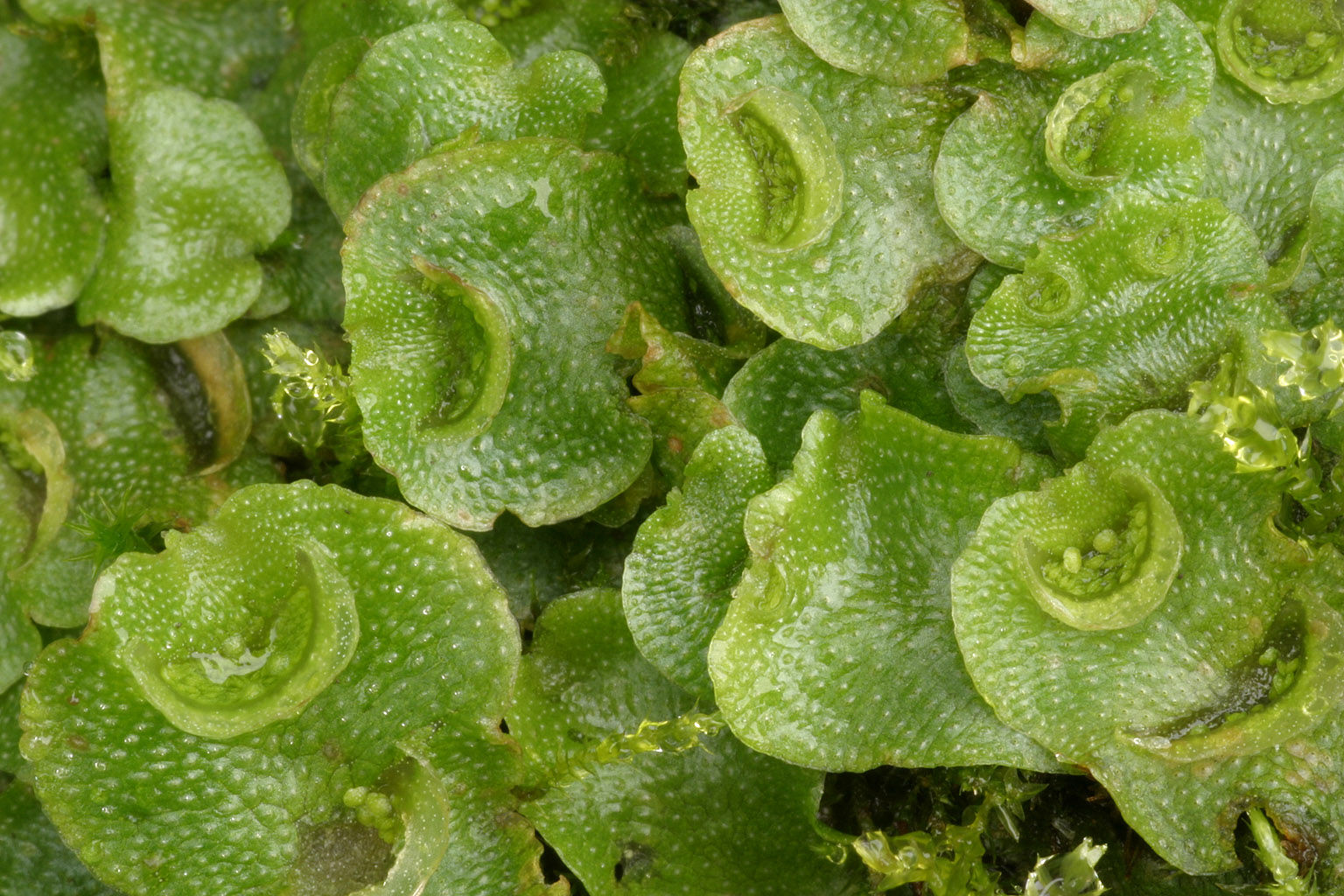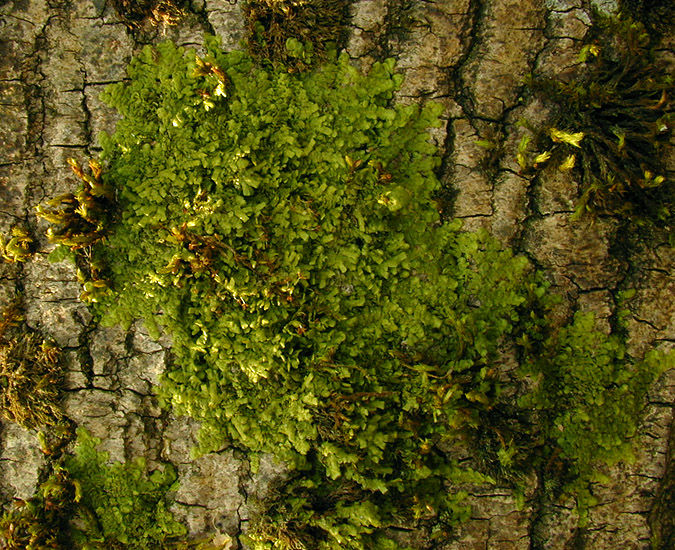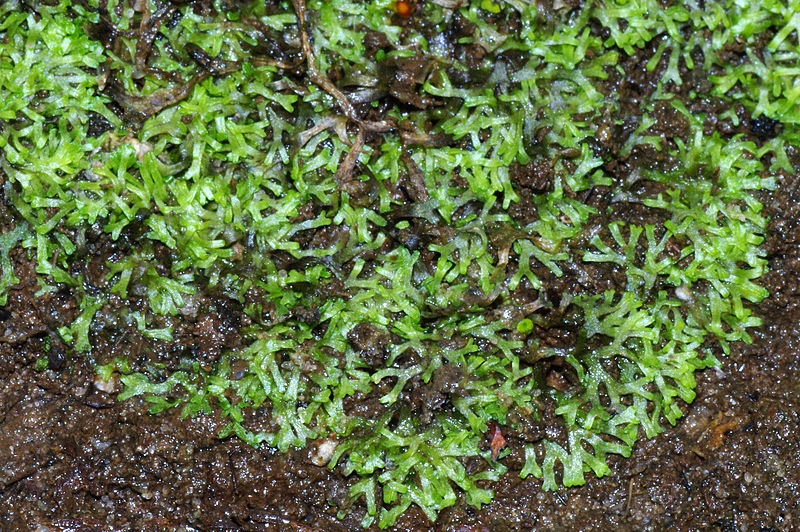by Piter Kehoma Boll
Four liverworts were previously presented here, but it is more than time to talk about the liverwort, the species that made this group of plants receive its common name. Marchantia polymorpha is its scientific name, and in English it is often referred to as the common liverwort.
Widespread throughout the Holarctic ecozone (i.e., North America, Europe, Northern Asia), the common liverwort has, like all liverworts, its gametophyte phase as the dominant one. It has flattened thallus up to 10 cm long and 2 cm wide, often green but sometimes becoming brownish or purple. The overall shape of the thallus resembles that of liver, hence the name liverwort.

The gametophyte of the common liverwort is either male or female. Both plants produce umbrella-like structures, the gametophores, in which gametes are produced. The female gametophore has a star-like structure at the top, while the male gametophore has a flatenned disc, sometimes with lobed margins. When the male gametes are mature, they are carried with the water from the rain to the female gametophores, where they will fertilize the female gametes. The zygote will develop into a sporophyte, which grows from the underside of the female gametophore, making it look “fluffy”. The sporophyte, in turn, will produce spores that are released in the environment and will germinate to originate new gametophytes.

The gametophytes can also reproduce asexually by producing gemmae inside gemmae cups. The gemmaes are small lentil-shaped plants that are released in the environment when drops of water fall into the cups.

The common liverwort is considered a pioneer plant and colonize exposed soils very frequently. After large wildfires, it can quickly cover the soil of the affected region, thus preventing soil erosion. On the other hand, this quick spread makes it a common weed in gardens and greenhouses. It is also very resistant to high concentrations of lead in the soil, so regions in which this species is very abundant but otherwise few plant species grow can indicate a contaminated soil.

Due to its liver-like appearance, the common liverwort was historically used to treat liver ailments through the doctrine of signatures, which stated that a plant resembling the shape of a human organ could be used to treat diseases of that organ.

In recent decades, the interest on the common liverwort as a model organism started to grow. It has a quick life cycle, is easily cultivated and has a relatively small genome, which makes it interesting to study several biological aspects, especially the evolution of plants. Its genome has been sequenced only very recently though, in 2017, but has already shown to help us understand the evolution of plants to conquer the land.
– – –
Previous liverwort fellows:
Floating Crystalwort (on 18 November 2016)
Flat-leaved Scalewort (on 20 October 2017)
Crescent-cup liverwort (on 15 June 2018)
Common Pellia (on 28 August 2020)
– – –
– – –
References:
Bowman, J. L., Kohchi, T., Yamato, K. T., Jenkins, J., Shu, S., Ishizaki, K., … & Schmutz, J. (2017). Insights into land plant evolution garnered from the Marchantia polymorpha genome. Cell, 171(2), 287-304. https://doi.org/10.1016/j.cell.2017.09.030
Shimamura, M. (2016). Marchantia polymorpha: taxonomy, phylogeny and morphology of a model system. Plant and Cell Physiology, 57(2), 230-256. https://doi.org/10.1093/pcp/pcv192
– – –
* This work is licensed under a Creative Commons Attribution-ShareAlike 4.0 International License.
This work is licensed under a Creative Commons Attribution-ShareAlike 4.0 International License.










